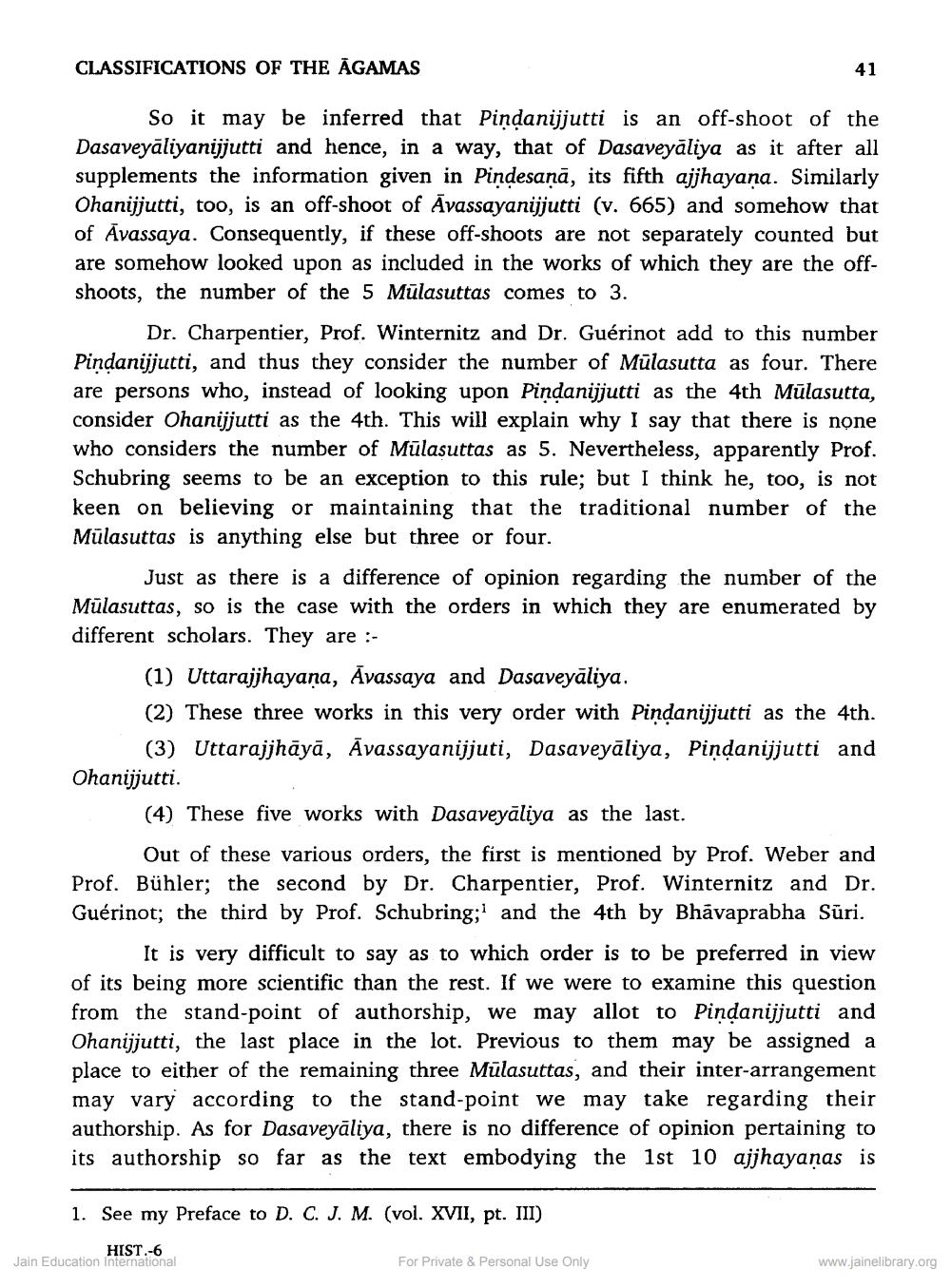________________
CLASSIFICATIONS OF THE AGAMAS
41
So it may be inferred that Pindanijjutti is an off-shoot of the Dasaveyāliyanijjutti and hence, in a way, that of Dasaveyaliya as it after all supplements the information given in Piņdesanā, its fifth ajjhayana. Similarly Ohanijjutti, too, is an off-shoot of Avassayanijjutti (v. 665) and somehow tha of Āvassaya. Consequently, if these off-shoots are not separately counted but are somehow looked upon as included in the works of which they are the offshoots, the number of the 5 Mülasuttas comes to 3.
Dr. Charpentier, Prof. Winternitz and Dr. Guérinot add to this number Pindanijjutti, and thus they consider the number of Mūlasutta as four. There are persons who, instead of looking upon Pindanijjutti as the 4th Mülasutta, consider Ohanijjutti as the 4th. This will explain why I say that there is none who considers the number of Mūlasuttas as 5. Nevertheless, apparently Prof. Schubring seems to be an exception to this rule; but I think he, too, is not keen on believing or maintaining that the traditional number of the Mülasuttas is anything else but three or four.
Just as there is a difference of opinion regarding the number of the Mülasuttas, so is the case with the orders in which they are en different scholars. They are :
(1) Uttarajjhayana, Āvassaya and Dasaveyāliya. (2) These three works in this very order with Pindanijjutti as the 4th.
(3) Uttarajjhāyā, Āvassayanijjuti, Dasaveyāliya, Piņdanijjutti and Ohanijjutti.
(4) These five works with Dasaveyāliya as the last.
Out of these various orders, the first is mentioned by Prof. Weber and Prof. Bühler; the second by Dr. Charpentier, Prof. Winternitz and Dr. Guérinot; the third by Prof. Schubring;i and the 4th by Bhavaprabha Sūri.
It is very difficult to say as to which order is to be preferred in view of its being more scientific than the rest. If we were to examine this question from the stand-point of authorship, we may allot to Pindanijjutti and Ohanijjutti, the last place in the lot. Previous to them may be assigned a place to either of the remaining three Mūlasuttas, and their inter-arrangement may vary according to the stand-point we may take regarding their authorship. As for Dasaveyāliya, there is no difference of opinion pertaining to its authorship so far as the text embodying the 1st 10 ajjhayaņas is
1. See my Preface to D. C. J. M. (vol. XVII, pt. III)
HIST.-6 Jain Education International
For Private & Personal Use Only
www.jainelibrary.org




